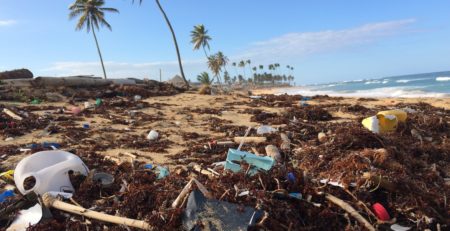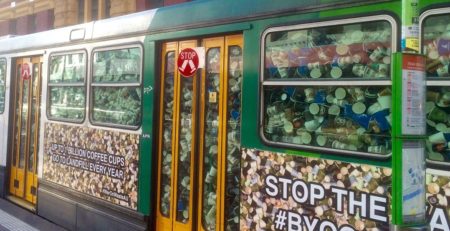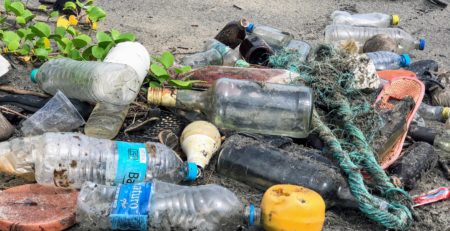Degradable, biodegradable and compostable… what does it all mean?
You’re scouring the shelves in the supermarket for something to line your bin. What’s the difference between degradable, biodegradable and compostable? Is one better than the rest? Are they all good… or all bad? How do you know which bag to choose to leave as little destruction as possible? These ‘plastic alternatives’ have been marketed as our Hail Mary to the pollution epidemic, but are they really as sustainable as they seem? Let’s take a look at these options and unpack exactly what they mean when they use these words.
Degradable
Degradable sounds great. When I first heard about degradable plastic, I instantly thought ‘this is it’. No more new plastics floating through our water and killing off sea life, birds and other animal friends. It was a rude shock when I found out otherwise. Degradable plastics do possibly more damage than regular plastics do, wreaking havoc on our marine life and eco systems. These types of plastics don’t biodegrade (using living microorganisms to break it down) and cannot be composted. Instead, they’re loaded up with additional chemicals to help them break down in the water. Not only are we unleashing more plastic into our waterways and oceans, we’re also flooding it with additional chemicals; more than what is released in a ‘regular’ plastic break down. But wait, there’s more! In addition to releasing extra chemicals, these bags don’t disappear. Instead, they break down into tiny pieces called micro plastics and get passed up the food chain, starting with the tiny creatures that eat them and ending in the big guys who eat the little guys (the big guys are us, by the way). It’s been said that by 2050, there will be more pieces of plastic in the ocean than there will be marine life. If that’s not a wake-up call, then please someone tell me what is.
So, is degradable an eco-friendlier choice? Absolutely not. With additional chemicals and the release of thousands of micro plastic particles, degradable seems like an even worse choice than regular old plastic.
Biodegradable
Biodegradable plastics have their hearts in the right place. It was discovered that this certain type of plastic will in fact break down and disappear into nothing more than water, carbon dioxide and biomass. Sounds good, right? Well this is apparently true… in the right conditions. For biodegradable products to break down, they need 2 key elements; a temperature of at LEAST 50 degrees Celsius and UV light. When biodegradable meets ocean, they won’t break down. As soon as these plastic vessels fill with water, they lose their buoyancy and start sinking, where the water is much colder, and the sunlight never reaches. In addition to not being able to break down in the ocean, much like their degradable cousins, biodegradable plastics have extra chemicals to aid in their break down, making them a disaster in the recycling world. With the additional chemicals, biodegradable products can potentially ruin a whole recycle process, sending the whole load to landfill.
Should we be using biodegradable products? No. The idea is nice, but we don’t have enough information or the right facilities to accommodate for them. At this point in time, they’re no different to regular plastic products.
Compostable
Compostable. Chuck these in your garden next to the veggie scraps and Bob’s your uncle! Whilst this is great news and a breakthrough from all the doom and gloom of the above mentioned, there’s still a catch with compostable plastics and it is no different to biodegradable plastics. Compostable bags still need direct sunlight and at least 50 degrees Celsius to break down and turn into compost, and this is taken directly from a compostable bag manufacturers website. Sometimes, these conditions can’t be met in your own garden. Compostables won’t break down in water, either, becoming just as harmful as petroleum plastics. Additionally, if taken to landfill, these products degrade without oxygen and produce copious amounts of methane, which contributes directly to our greenhouse gases and global warming. Like biodegradable products, compostable plastics aren’t ready and haven’t been researched enough. In addition, Australia still doesn’t have enough infrastructure or processing facilities to deal with these products, so they’re still going to landfill or entering our water systems.
Are compostable plastics the way to go? I think in some conditions you could absolutely use them, like if you lived in a very hot climate or lived in an area with green waste bins. Just make sure you use home certified compostable bags. Here in Melbourne, I don’t think compostable products are the best move for the environment.
My advice? Sort through what you dispose of before you actually throw it away. Take your soft plastics to a supported recycling bin in your local supermarket. Recycle what can be recycled and reduce what you throw away to landfill. Use newspaper instead of bin liners to reduce your plastic waste. Put compostable products in a green organics bin. Buy eco-friendly products instead of single use plastic products. Do your part to help sustain our Earth!






